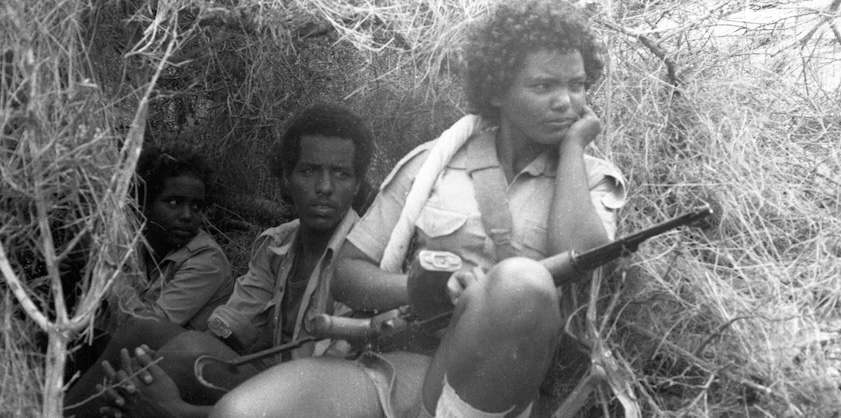by TAYYABA JIWANI & AYYAZ MALLICK

In Part 1 of this two-part interview, Tariq Ali reflects on his memories of the 1968 movement in Pakistan, arguably the only unequivocal success of the wave of protests that shook the world.
Veteran activist and intellectual, Tariq Ali, generously gave his time to Jamhoor for an interview. We discussed the trajectory of the global Left since the heady days of 1968 – the year of street revolts and agitations that reverberated across the world, from the civil rights and anti-Vietnam War movement in the United States, to students’ and workers’ protests in Mexico, France, and all over Europe. Having participated in these agitations across Europe, Ali was also centrally involved in the mass uprising in Pakistan, which brought an end to a decade of military dictatorship under Ayub Khan.
In this two-part conversation, we touch upon a wide range of issues – from Ali’s recollections of the ‘68-69 movements (Part I), to the trajectory of the Left ever since (Part II).
Throughout, Ali maintains a resolutely internationalist outlook, in keeping with the universalist ideals of 1968-69, the revolutionary street fighting years.
Ayyaz Mallick (AM) – This year marked the fiftieth anniversary of the 1968 protest movements. Your book on these events in Pakistan was also re-published this year – Uprising in Pakistan: How to Bring Down a Dictatorship. You have often said that Pakistan was perhaps the only unequivocal success of the ‘68 movements – the military dictatorship of Ayub Khan was toppled. But many people might not know this. Can you give us a sense of that time “from below” – through your own experience with the movement, the events, the sentiments, the structure of feeling of people on the ground?
Tariq Ali (TA) – Well I was in Britain, having left in 1963, but I’d started getting phone calls, letters, and messages saying it’s better for me to come back! And then before everything blew up, Raja Anwar, a Rawalpindi student leader, sent a telegram saying, “On behalf of the Students Action Committee in Rawalpindi, we invite you to come and give an address”. So I left and by the time I got there, in January 1969, the movement was in full flow.
It started on 7th November 1968 – the anniversary of the Russian Revolution. But no one knew that! You know, when I was a student in Pakistan, I used to travel; under restrictions sometimes, but I did travel. This time, there were no restrictions at all! So, Habib Jalib and I went all over West Pakistan. He would recite poems and I would give a speech in Urdu or Punjabi. And you got a real feeling of how political consciousness changes. I’ve never got that feeling anywhere else, never on that scale. People were incredibly radicalised, and of course they wanted to get rid of the dictatorship of Ayub Khan, but it went beyond that. All their questions came up – why do we live like this? Has God ordained that the poor should always be poor? These questions, you know, from ordinary people.
Jamhoor for more
1968 and ever since: An interview with Tariq Ali (Part 2)

In Part II of our interview, Tariq Ali examines the afterlives of 1968 today: global youth insurgencies, anti-imperialist movements, and the tasks of the hour for the Left.
Jamhoor interviewed renowned public intellectual and activist, Tariq Ali. We discussed the trajectory of the global Left since the heady days of 1968 – the year of street revolts and agitations that reverberated across the world, from the civil rights and anti-Vietnam War movement in the United States, to students’ and workers’ protests in Mexico, France, and all over Europe. Having participated in these agitations across Europe, Ali was also centrally involved in the mass uprising in Pakistan, which brought an end to a decade of military dictatorship under Ayub Khan.
In Part I of this two-part conversation, Ali recounted the participation of workers, students, and women in the mass upheavals of the 60s. Here in Part II, Ali examines the resonances of those events today – from generational tensions in the Left, to the changing role of intellectuals, the current nature of US imperialism, the emerging anti-war movement in Pakistan, and of course, South Asia’s favourite sport, cricket.
yyaz Mallick (AM) — I get the sense that the ‘68 moment was very much i) a response to the geopolitics of the time, because of Vietnam, the Tet Offensive, many national liberation movements etc., and ii) a generational revolt against the old Left. And it seems as though the moment now has some resonance with that time, in terms of both the geopolitical dynamics and a new kind of youth revolt. Is this something you have also observed or agree with?
Tariq Ali (TA) – Yes, it was a generational revolt without any doubt, and with very specific reasons and causes. But in terms of the moment now, it would be nice if this was the case. You have to understand that something happened in the 90s, a two-pronged thing – one, the complete collapse of the Soviet Union, and it was a collapse of their leadership. No one destroyed them from the outside. It was an implosion, because they couldn’t find a proper way to reform the system, though they tried twice before, and due to the naiveté of its leaders – Gorbachev in particular – who actually thought that the West would help the Soviet Union. The collapse of the Soviet Union, regardless of what you thought about its leaders or how it functioned internally, was a huge defeat for the Left.
Jamhoor for more








